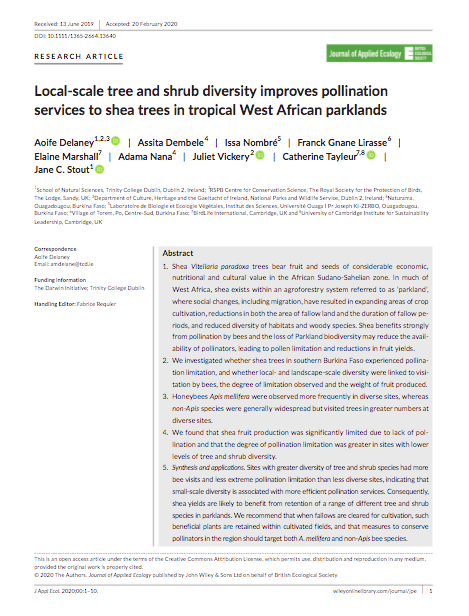Local‐scale tree and shrub diversity improves pollination services to shea trees in tropical West African parklands

ABSTRACT
Shea Vitellaria paradoxa trees bear fruit and seeds of considerable economic, nutritional and cultural value in the African Sudano‐Sahelian zone. In much of West Africa, shea exists within an agroforestry system referred to as ‘parkland’, where social changes, including migration, have resulted in expanding areas of crop cultivation, reductions in both the area of fallow land and the duration of fallow periods, and reduced diversity of habitats and woody species. Shea benefits strongly from pollination by bees and the loss of Parkland biodiversity may reduce the availability of pollinators, leading to pollen limitation and reductions in fruit yields.
We investigated whether shea trees in southern Burkina Faso experienced pollination limitation, and whether local‐ and landscape‐scale diversity were linked to visitation by bees, the degree of limitation observed and the weight of fruit produced.
Honeybees Apis mellifera were observed more frequently in diverse sites, whereas non‐Apis species were generally widespread but visited trees in greater numbers at diverse sites.
We found that shea fruit production was significantly limited due to lack of pollination and that the degree of pollination limitation was greater in sites with lower levels of tree and shrub diversity.
Synthesis and applications: Sites with greater diversity of tree and shrub species had more bee visits and less extreme pollination limitation than less diverse sites, indicating that small‐scale diversity is associated with more efficient pollination services. Consequently, shea yields are likely to benefit from retention of a range of different tree and shrub species in parklands. We recommend that when fallows are cleared for cultivation, such beneficial plants are retained within cultivated fields, and that measures to conserve pollinators in the region should target both A. mellifera and non‐Apis bee species.